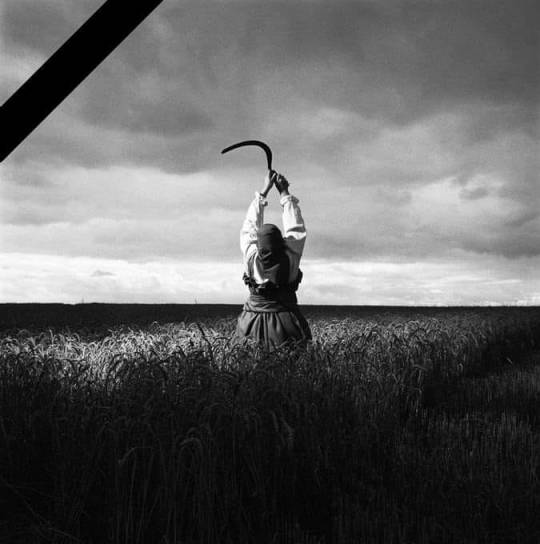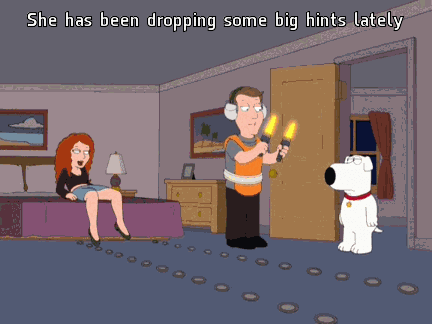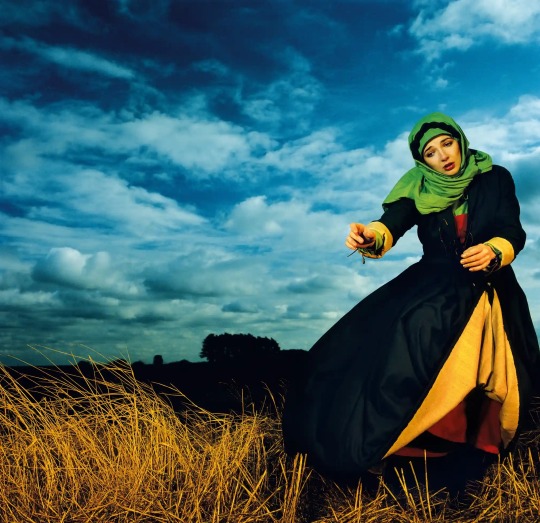#brian griffin photography
Explore tagged Tumblr posts
Text

The Specials at a barbershop in Coventry, Brian Griffin, late 1970s to early 1980s
#the specials#photography#vintage photography#vintage#black and white photography#brian griffin#celebrity#music#ska#1970s#1980s#english#british#100 notes
154 notes
·
View notes
Text


Comme des Garçons in Six Magazine (1989) Photography: Brian Griffin
514 notes
·
View notes
Text

John Peel by Brian Griffin, 1978.
73 notes
·
View notes
Text

Brian Griffin | British Journal of Photography
53 notes
·
View notes
Text

34 notes
·
View notes
Text

Brian Griffin
1948 - 2024
32 notes
·
View notes
Text

The Specials at a barber shop in Coventry, photo by & © Brian Griffin.
12 notes
·
View notes
Text

Brian Griffin, April 13, 1948 – January 27, 2024.
1988 self-portrait.
13 notes
·
View notes
Text

Brian Griffin (UK, 1948 - 2024)
Siouxsie, studio, Rotherhithe, London 1984. Silver bromide print 18 x 18 in (46 x 46 cm)
https://www.rencontres-arles.com/en/expositions/view/1178/brian-griffin
9 notes
·
View notes
Text

When it's that time of the month
#Girl blogging#Girl#Just girly things#cute#Cute core#Girlcore#Mood board#Tumblr girls#Pink#Coquette#Kawaii#kawaii aesthetic#Cute things#Angelcore#Girlboss#Style#Aesthetic#Vibe#Background#Wallpaper#Art#Photography#lol#gif#Fashion#Meme#Funny#Family Guy#Brian#brian griffin
4 notes
·
View notes
Text

Kate Bush, Brian Griffin, 1983
#kate bush#photography#vintage photography#vintage#brian griffin#1980s#1983#music#celebrity#english#british#color photography#100 notes
261 notes
·
View notes
Text

Brian Griffin, The Meeting
5 notes
·
View notes
Text

Echo and the Bunnymen, Porthcawl, Wales 1981, Heaven Up Here photoshoot (ph. Brian Griffin)
0 notes
Text

STUMM9 / A Broken Frame / Photography / 1982 / STUMM13 / Construction Time Again / Photography / 1983 Brian Griffin images from the photoshoot for the Depeche Mode albums A Broken Frame (1982) and Construction Time Again (1983).
Mute: A Visual Document by Daniel Miller, Terry Burrows
#depeche mode#a broken frame#construction time again#brian griffin#pheere#mute#terry burrows#daniel miller
64 notes
·
View notes
Text

Brian Griffin, who has died aged 75, was one of the most original and influential British photographers of his generation. His images of Kate Bush, Donald Sutherland, Iggy Pop and Damien Hirst, and his album covers for Echo and the Bunnymen and Depeche Mode, are some of the most famous pictures of the 1980s.
For the cover of Depeche Mode’s 1982 LP, A Broken Frame, Griffin transposed Soviet social realism to a cornfield off the M11 in East Anglia, and the result was named by Life magazine as one of the greatest images of the decade. His virtuosity saw him declared photographer of the decade by the Guardian in 1989.
His work, which has been exhibited globally, is in the permanent collections of the National Portrait Gallery, the V&A, the Arts Council and the Birmingham Museum and Art Gallery.
Griffin’s success capturing the glossy worlds of money and hairspray was rooted in something darker. He was forged in the Black Country, the industrial heartland of the West Midlands, and the influence of the factories, and the harsh light from the furnaces, suffused his early photography. He had a relentless work ethic and would do anything to succeed in a world far removed from that of his upbringing.
He was born in Birmingham, the only child of Edith (nee Moore) and James Griffin, who were both factory workers. The family lived in a two-up, two-down in Lye, where every street had a factory. Young Brian felt that “the whole world appeared to be partly made of metal. Everything you touched seemed to be iron and steel.” After passing the 11-plus exam he went to Halesowen technical school, then went to work at the age of 16.
In 1965 he was making conveyors for readymix concrete plants when the factory foreman suggested he join Hagley camera club, where he picked up a camera for the first time. He then got a job at British Steel and was working as a nuclear pipework engineering estimator in 1969 when everything changed. Devastated by the end of a love affair, he decided to leave his old life behind.
Griffin’s only means of escape was photography, so he put some of his camera club images into a Boots photo album and applied to art colleges. He was accepted into Manchester Art School at the age of 21, where he studied with Martin Parr and Daniel Meadows.
In the college library he devoured books on art, and after graduating and moving to London, he spent weeks at the National Film theatre immersing himself in German and French cinema. Inspired, he began to look for work.
In 1972 he went to see the art director of Management Today magazine. Griffin’s talent was plain to see, and he was immediately put to work. He shot a shadowy monochromatic image of rush hour on London Bridge from the back of a cab, calling it his Metropolis image, after Fritz Lang’s expressionist masterpiece. Prior to this, Griffin had doubted his ability, but now he knew that he could make it as a photographer, he unleashed his artistry.
Through his images for the magazine, Griffin introduced surrealism to the boardroom. His industrial background meant that he clicked with the businessmen who were his subjects, and the captains of industry played ball. He wittily subverted the corporate power of the men he photographed by introducing discordant juxtapositions, building tension. He wound intrigue throughout his work, stopping the viewer in their tracks, making them take time over his images, and his work began to be recognised.
Ambitious, he wanted to expand his repertoire and earn more money. He understood that the style he had honed in the business world would translate into the pop sphere, where post-punk bands were eschewing bondage trousers in favour of being suited and booted. He went to Stiff Records and photographed Elvis Costello and the Attractions and Ian Dury and the Blockheads.
Recognition followed and commissions flooded in. He worked for Esquire, Rolling Stone, the Face, Time Out, the Sunday Times and the Observer, in advertising for British Airways, BMW and Levi Jeans, and photographed Brian May in a series for Sony Walkman in 1980.
That year he moved to Rotherhithe, a working-class area of south London on the banks of the Thames. He loved the place, recognised its people and was to stay there all his life. He set up a studio from where he continued to push the boundaries of the conventional. Using his background in engineering, allied to his innate creativity, he built lighting machines and used knicker elastic and ping-pong balls to create startling special effects in an analogue age.
Some experiments led to happy accidents: his highly regarded 1984 image of Siouxsie Sioux, intended as a double exposure, was in fact a triple: “It was wrong, but so right,” he said.
In the days before social media, aside from magazines, the main showcase for a photographer’s work was on walls, be they in galleries or town centres. Griffin’s first solo London exhibition was at Contrast Gallery in 1981, and the posters of his work for bands such as Spandau Ballet and Ultravox were plastered across the land. His family finally saw his work and were proud: they had always wanted more for Brian than factory life.
As well as portraiture, he produced numerous documentary projects. In 1986 he photographed construction workers at the Broadgate development in the City of London. At the time he was still reeling from the death of his father from lung cancer, due to a life inhaling cast-iron dust. The project allowed Griffin to pay homage to his father and to all working people: he monumentalised the men “like knights lying in state in a cathedral with their swords”.
In 1989 he left still photography to make television commercials, music videos and short films, but returned a decade later. In 2003 he produced a project to aid Birmingham’s bid to become the European City of Culture. He worked promoting the 2012 London Olympics and in 2015 his photo-essay, Himmelstrasse, movingly documented the railway tracks in Poland that transported people to Nazi death camps. He continued to work up until the end of his life, with new projects still in the pipeline.
He had more than 20 monographs published in his lifetime and won numerous awards. In 2013 the Royal Photographic Society awarded him their Centenary Medal, and the following year he received an honorary doctorate from Birmingham City University for his lifetime contribution to his home city.
Griffin’s 1980 marriage to the photographer Frances Newman ended in divorce. Their daughter, Layla, died in 2020; he is survived by their son, Danz, and three grandchildren.
🔔Brian James Griffin, photographer, born 13 April 1948; died 27 January 2024
Daily inspiration. Discover more photos at Just for Books…?
10 notes
·
View notes
Text
An urgent phone call pulls a Yale Law student back to his Ohio hometown, where he reflects on three generations of family history and his own future. Credits: TheMovieDb. Film Cast: J.D. Vance: Gabriel Basso Beverly “Bev” Vance: Amy Adams Bonnie “Mamaw” Vance: Glenn Close Lindsay Vance: Haley Bennett Usha Chilukuri: Freida Pinto Papaw: Bo Hopkins Young J.D. Vance: Owen Asztalos Matt: Jesse C. Boyd Phillip Roseman: Stephen Kunken Ken: Keong Sim Travis: Morgan Gao Chris: Ethan Suess Kevin: Jono Mitchell Uncle Pat: Bill Kelly Uncle Arch: David Dwyer Lori: Sarah Hudson Jimmy (Bev’s Brother): Ted Huckabee Bill (Nurse): Nathan Hesse Cousin Nate: Max Barrow Bonnie (Mamaw, 30’s): Sunny Mabrey Jim (Papaw, 30’s): Brett Lorenzini Young Bev (6 years): Tierney Smith Cheryl: Helen LeRoy Emma: Kinsley Isla Dillon Adult Frank McFee: Ryan Homchick Chip: Joshua Stenvick Brooks Houghton: Bill Winkler Brett: Chase Anderson Pamela: Amy Parrish Rich: Ed Amatrudo Hiram Walcott: David de Vries Cocktailer #1: Holly Morris Cocktailer #2: Brandon Hirsch Server: David Alexander Obsequious Server: Alexander Baxter Waiter: Steven Reddington Wiry Law Partner: Angelo Reyes Stodgy Partner: John Rymer Young Bonnie (Mamaw 13 Years): Abigail Rose Cornell Adult Louis Zablocki: Lowrey Brown Young J.D. (4 years): Hunter James Evers Dane: Riley McNerney Pool Woman: Zele Avradopoulos Mr. Selby: David Jensen Holler Aunt: Skylar Denney Young Louis: John Whitley Doug: Zac Pullam Young Frank: Shane Donovan Lewis Officer #1: Mike Senior Officer #2: William Mark McCullough Kameron: Dylan Gage Katrina: Hannah Pniewski Doctor: David Marshall Silverman Dr. Newton: Jason Davis Davis: Joshua Brady Nasty Cashier: Cory Chapman Nurse: Tatom Pender Patient: Cathy Hope Ray: David Atkinson Salesperson: Adam Murray Scared Woman: Dianna Craig Meghan: Emery Mae Edgeman Young Jim (Papaw 16 Years): Rohan Myers Meals On Wheels Delivery Man: Matthew Alan Brady Young Lori (6 years): Lucy Capri Sally Coates: Déjá Dee Kyle: Daniel R. Hill Arguing Girlfriend: Jordan Trovillion Secretary at Club: Yossie Mulyadi ICU Nurse #1: Alisa Harris ICU Nurse #2: Tiger Dawn Rehab Mother: Darla Robinson Rehab Recepcionist: Belinda Keller Old Mamaw Blanton: Jessie Faye Shirley Nurse Vivian: Cheryl Howard Law Candidate Tim: Tim Abou-Nasr Curt: Leland Thomas Griffin Officer Connor: Drew Emerson Jones EMT #1: Justin P. Turner EMT #2: Joshua T. Schneider Marine Barber: Tony Ward Dining Hall Manager: Mara Hall Jill at Financial Aid Office: Tess Malis Kincaid Gas Station Attendant: Chris Charm Intake Receptionist: Mary Kraft Shoe Store Manager: Suehyla El-Attar Study Hall Friend #1: Matthew Withers Study Hall Friend #2: Jessica Miesel Study Hall Friend #3: Benjamin Rapsas Peter (uncredited): Ethan Levy Middletown Resident (uncredited): Bret Aaron Knower Film Crew: Original Music Composer: Hans Zimmer Producer: Brian Grazer Producer: Ron Howard Post Producer: William M. Connor Executive Producer: Diana Pokorny Production Design: Molly Hughes Sound Re-Recording Mixer: Robert Hein Director of Photography: Maryse Alberti Casting: Carmen Cuba Producer: Karen Lunder Stunt Coordinator: Monique Ganderton Writer: Vanessa Taylor Compositing Artist: Daniel L. Smith Camera Operator: Thomas Lappin Compositing Artist: Michael A. Martinez Supervising Art Director: Gregory A. Weimerskirch Costume Designer: Virginia B. Johnson Set Costumer: Bob Moore Jr. Makeup Department Head: Eryn Krueger Mekash Foley Artist: Heikki Kossi Art Direction: Shawn D. Bronson Rigging Grip: Gary Blair Makeup Artist: Erica Stewart Sound Re-Recording Mixer: Josh Berger Compositing Artist: Steve Dinozzi VFX Artist: Bryan Haines Visual Effects Producer: Chris LeDoux Original Music Composer: David Fleming Set Dresser: Aaron Robert Hall Assistant Art Director: Chris Yoo Costume Supervisor: Dana Pacheco Sound Designer: Grant Elder Makeup Artist: Jodi Byrne Set Costumer: Robin Fields Compositing Artist: Brad Lucas Set Dresser: Sam Carter Makeup Artist: Andrea Vieth Set Dresser: Maxfield Ladish Set Dresser: Natalie LeCompte Rigging ...
#1990s#american dream#appalachian#appalachian mountains#based on memoir or autobiography#based on novel or book#child abuse#childhood memory#drug addiction#drug rehabilitation#grandmother#heroin#hillbilly#kentucky#law student#mother son estrangement#mother son relationship#ohio#overdose#single mother#small town life#teenage boy#Top Rated Movies#traditional family#yale university
0 notes